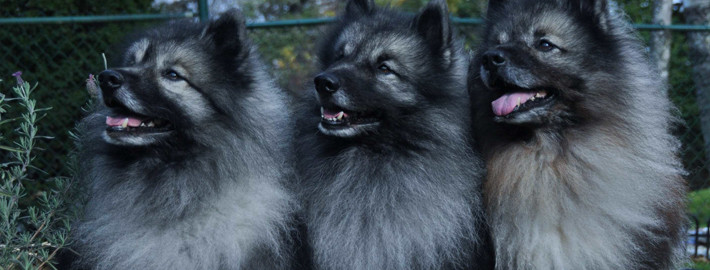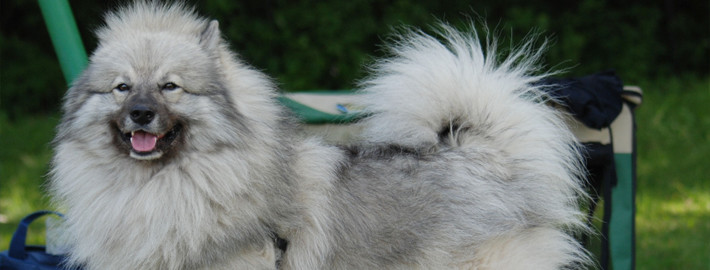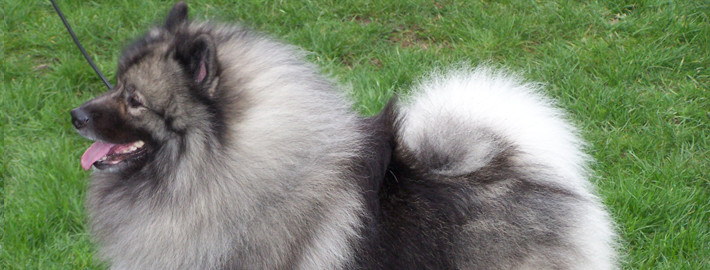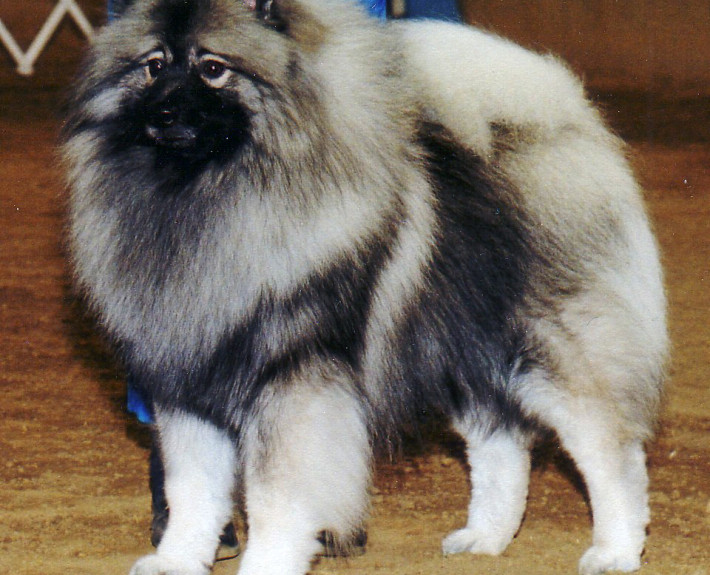What makes the Keeshond Unique?
The keeshond is a square-proportioned, sturdy dog of Northern type. It is an all-purpose dog, a generalist rather than a specialist, and its build reflects this. The gait of the keeshond is distinctive: clean, bold and brisk, with only slight to moderate reach and drive. It has a long straight harsh outer coat standing off from its body, a good mane and a thick downy undercoat — all imparting superb insulation from cold and damp. The keeshond combines many traits of the best house dogs: fairly energetic and playful, very attentive and loving, and ready for adventure yet content to take it easy. It is sensitive and learns readily. It makes a good companion for a child or adult. It is friendly to all but, nonetheless, an alert watchdog.
Breed Groups
Page Contents
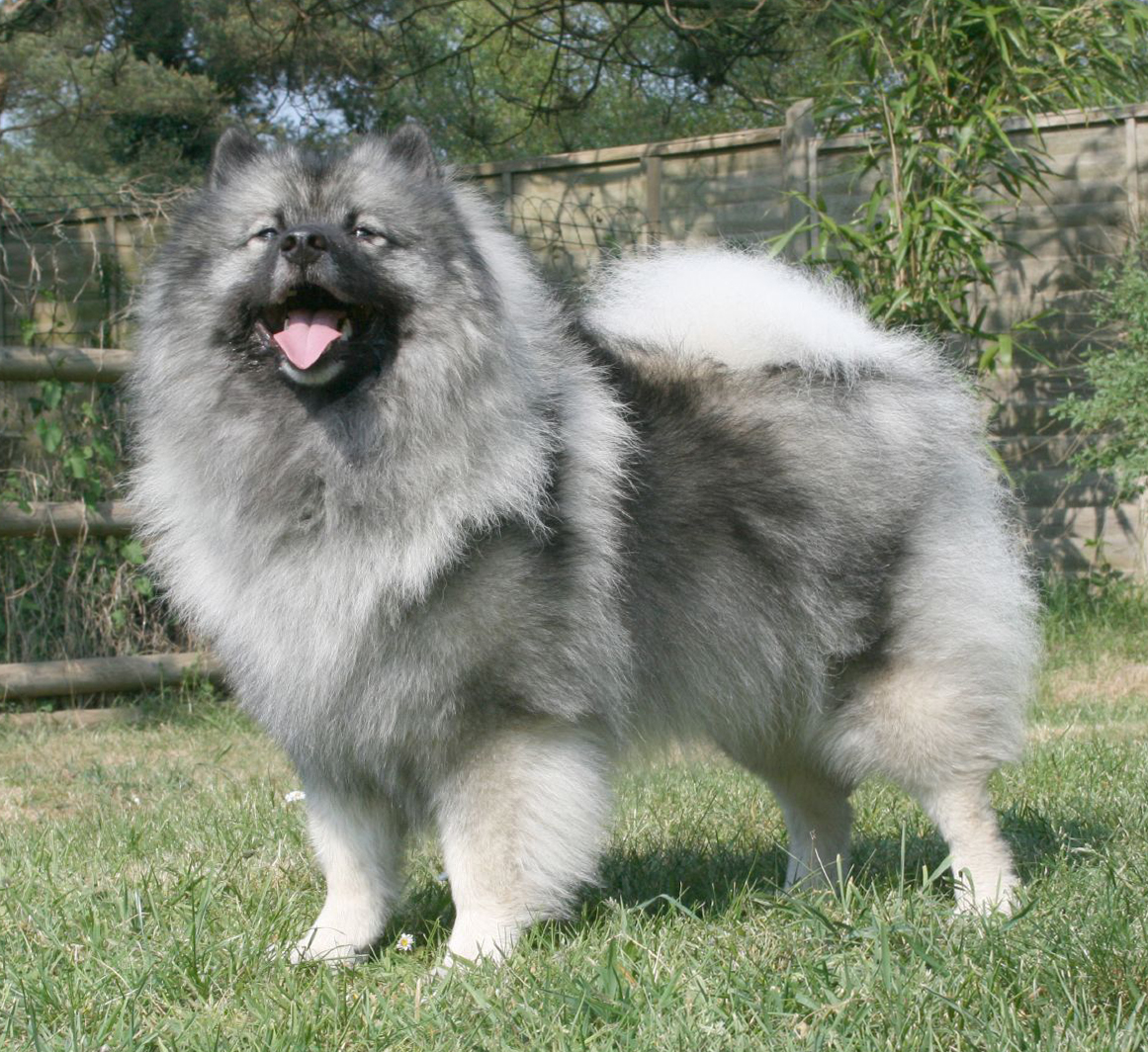
Is the Keeshond Right For You?
An affectionate, good-natured companion, the Keeshond is outgoing and friendly with people and dogs, following the lead of their owners when welcoming strangers. The breed learns quickly and is energetic, requiring daily exercise. Twice-weekly brushing is sufficient. If you are considering purchasing a Keeshond puppy, learn more. *Non-Sporting Group; AKC recognized in 1930.
*deal size: 17 to 18 inches tall at the shoulder.
*Barge dog; companion.
In 5 Words
- Playful
- Agile
- Obedient
- Bright
- Quick
Characteristics
Learn About the Keeshond
Description
A member of the spitz group of dogs, the Keeshond in American Kennel Club (AKC) standard is 17 inches (43 cm) to 18 inches (46 cm) tall and 19.25 inches (48.9 cm) ± 2.4 inches (6.1 cm) in the Fédération Cynologique Internationale (FCI) standard and weighs 30 pounds (14 kg) to 40 pounds (18 kg). Sturdily built, they have a typical spitz appearance, neither coarse nor refined. They have a wedge-shaped head, a medium-length muzzle with a definite stop, small pointed ears, and an expressive face. The tail is tightly curled and, in profile, should be carried such that it is indistinguishable from the compact body of the dog.
Short History of the keeshond
The keeshond (pronounced KAYZ-hawnd) is an old breed used for centuries as a family companion and watchdog. Many Keeshonden could be found living on the barges and farms in Holland where their masters depended on them for controlling the vermin population as well as providing loyal companionship.
A longtime resident of Holland, the Keeshond became the symbol of the Patriot Party in the 18th century. The name comes from the leader of this group, Kees De Gyselaer. This is the basis for the breed name as “Kees’ dog” in Dutch would be “Kees hund.”
The original Keeshond probably descended from the same arctic strains that produced the samoyed, spitz and Norwegian elkhound. The dog’s gentleness and devotion suggest that he was never intended as a hunting dog, but rather as a companion.
Today, the Keeshond continues to be regarded as a loyal house pet and an outgoing “people dog.”
Temperament
Temperament is extremely important in the Keeshond breed. Well-bred, well-mannered Keeshonds are neither timid nor aggressive. To the contrary, they are outgoing, lively and friendly, both with people and with other dogs. These are smart, intelligent, alert, affectionate animals. They are gregarious and cuddly, and are particularly fond of children. Keeshonds thrive on being with their people. They always want to be the center of attention and to participate in all family activities.
Caring for Your Keeshond
General Health
Keeshonden are generally a very healthy breed. Though congenital health issues are not common, the conditions which have been known to sometimes occur in Keeshonden are hip dysplasia, luxating patellas (trick knee), epilepsy, Cushing’s disease, diabetes, primary hyperparathyroidism, and hypothyroidism. Von Willebrand’s disease has been known in Keeshonden but is very rare. An accurate test for the gene causing primary hyperparathyroidism (or PHPT) has recently been developed at Cornell University. As with any breed, it is important when buying a puppy to make sure that the parents have been tested and certified free from inherited problems.
Keeshonds in a UK Kennel Club survey had a median lifespan of 12 years 2 months. 1 in 4 died of old age, at an average of 14–15 years.
When purchasing a Keeshond, make sure to check the health testing available on both parents, both through the breeder, and the public Orthopaedic Foundation of Animals (OFA) health site. www.offa.org
Grooming & Bathing
One of the few disadvantages of having a Keeshond is that they require regular grooming to keep them from matting. One can expect to spend an hour once a week brushing. They do not continually shed their coats. Instead, males will blow their coats once a year. Unspayed females lose theirs twice a year. Generally the undercoat comes out first, followed by the guard hairs. In about one month’s time you can easily comb or brush out a green garbage bag full of hair. During this time period your 1-hour of grooming may increase to 3 or 4 hours to remove loose hair. Giving your dog a warm bath during this period helps the pores to open, thereby shortening the shedding period.
Bathing is generally only required 3 or 4 times a year on a dog with a hard feeling coat. Dogs with this proper textured coat seem to shed the dirt more easily than dogs with a woollier coat. Softer coated dogs may require more frequent bathing.
This breed needs to be taken on a daily walk. In addition, they will also enjoy good run in a safe, open field each day. This breed is fairly active indoors. When a Keeshond spins in circles it is a sign he needs more stimulating exercise. See video clip of an excited Keeshond spinning in circles.

